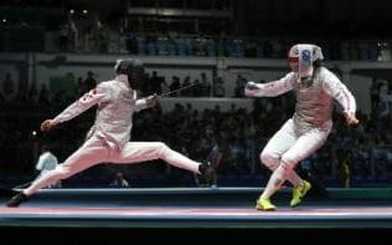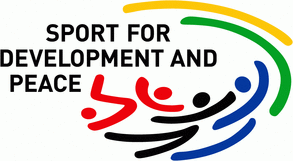So, roughly 7 years and two Olympic Games later I was excited to come in to contact with Sam Parfitt and The True Athlete Project. TAP’s mission of making a positive social change through improving athletes experiences in sport with a strong focus on mindful practices, resonated deeply with me. I had spent some time leading up to competing in the Rio Olympics thinking about the social impact and costs involved in hosting the Olympic Games and writing about athletes’ responsibility to speak out on social issues that concern them. TAP seemed to encompass what I had been thinking about and go further still by setting out practical methods by which real cultural change could eventually happen. This was an organisation that I wanted to get behind. As the performance director of a fencing club in Copenhagen, Denmark, it’s my task to optimise training and competition practices to enable our athletes to fulfil their potential and hopefully achieve world class results. The resources available to us in the sport of fencing in Denmark are a fraction of those in the nations that we must compete and succeed against in order to rise in the ranks. Since we cannot hope to compare in terms of financial support, participation numbers or organisational capacity, we know that we must find smarter, more innovative ways to develop and improve. Mindfulness in my opinion is, today, considered much the same way as sport psychology was 40 years ago. A small number of top athletes and coaches are ahead of the curve in using mindfulness techniques to improve their game. Some, such as the Chicago Bulls, embraced it with incredible success as far back as the late 80’s when their team was led by Michael Jordan. But mindfulness is by no means mainstream in elite sport, which is where the opportunity lies for those of us who are searching.  The connection between the mindful training of your ability to be more present and the experience of being in Flow (or, 'in the zone') is clear enough to justify special focus on mindful practice. When you add in the numerous physical and mental health benefits that have been attributed to that very same practice, it becomes almost irresponsible to ignore. Step into the fold TAP’s Mindfulness for Sport workshop; a packed two days of discussing theory and picking up practical tools, interspersed with experiencing first-hand the various mindful techniques that can be deployed. The wealth of experience and expertise in their team combined with the organisation’s values and mission, position TAP firmly at the heart of the mindful sport revolution. The flow of the weekend was tangible, starting with an introduction to mindfulness, it’s benefits and applications, as well as methods for communicating them to the coaching team, athletes and parents. This was followed by moving outside to go through a dynamic, mindful warm-up, some high-intensity mental focus agility games and a surprisingly enjoyable introductory session of Tai Chi. Then came one of the highlights for me; a guided mindful walk. As simple as it sounds it was a powerful experience, showing just how engaging a simple exercise such as standing, focusing on the feeling of shifting weight from one foot to the other can be. After just ten or so minutes, having gradually progressed up to normal walking speed, the exercise finished, and when I brought my attention back to ‘normal’, found myself in a wholly different state of mind to the one I started in. In fact, it even felt like I had been roused into a different physical location entirely. It struck me that the inherent simplicity of this practice combined with the resulting feeling would make for a powerful way to bring uninitiated athletes into the mindful world. This part of the workshop naturally progressed into a discussion on the theme of a ‘container’; the environment and conditions under which mindfulness is introduced and practiced with groups. This is where organisational psychology meets spirituality, using clear communication, agreements and rituals to create an open and safe space that allows participants to feel comfortable exploring new perspectives. Day two included trying out another style of mindful sitting, this time the Zen method, which turned out to offer up a very different kind of struggle to hold focus on the present moment. I’d never really considered the variety of experiences that come from the different forms of mindfulness practice, but I found out it can feel very distinct both during and after a session. The culmination of the weekend was the detailed work on formulating a structure for weaving mindfulness into the culture of my club back home. We will start with a series of introductory weekly sessions, where the athletes will get to experience the various forms of mindful practice, and then instil a short breathing exercise at the beginning of training sessions. The program builds up from there, including exercises to do at home, a points system for mindful activities undertaken and then eventually regular, scheduled group or team sittings. Having started talking to some of my athletes around this theme, I can feel a genuine sense of intrigue from them, but I also know that it will not be a straightforward sell. There will be some that don’t see how the practice links to their performance or are put off by the traditional spiritual stigma around mindfulness. It can also be difficult to stick to a regular routine of mindfulness, and paradoxically it’s often the first thing to drop off when life gets busier or more stressful. But that’s precisely why integrating it into the structures of our athletes’ lives is so important. If we can make it a part of every training session then they don’t need to set aside time for it and they can just go about their day as usual getting their dose along the way. I’m excited to get going with the project and to see what the reactions from the athletes will be. I have a feeling that this program will be especially valuable to the teenagers who struggle with the usual distractions and confusions of teenage life on top of those in their sport. But the plan is also to bring on board the youngest fencers too, so that hopefully by the time they get to that stage, they are already better placed to deal with what comes. My thanks to Sam and to TAP for organising a fantastic weekend of learning and first-hand experience. I’m certain there is a huge, positive impact to be made by spreading this fantastic approach to sportspeople of all levels.
348 Comments
 The global sport for development and peace (SDP) movement dates back to the historic Olympic Truce in Ancient Olympia. Today the movement is increasingly popular, with over 950 organizations and over 8,000 SDP “team players” registered on The International Platform on Sport and Development, a key online network dedicated to the SDP movement. Many international NGOs, as well as twenty-eight UN-affiliated agencies, are also integrating sport into their policies and programs at the country level. Sport as a tool for development is becoming increasingly recognized globally, highlighted recently in the United Nations’ post-2015 development agenda as an “important enabler of sustainable development”. This narrative has a familiar ring to it where, since the inception of SDP, there has been a longstanding agreement that the world of sport is a natural partnership for development initiatives with a large and unique potential to contribute to social change. Sport is often highlighted as a participatory, universal, inclusive and educational activity. Its cross-cutting nature and ability to inspire and empower individuals are also frequently cited as powerful and unique attributes in the development discourse. Sport today continues to be touted as a diverse tool that can contribute to a multiplicity of aspects of sustainable development, including human development, economic development, environment, peace, communications and advocacy, conflict prevention, health, demobilization and disarmament, youth development, disaster response, gender equality, war-related trauma and healing, social mobility and more. Could it be that overly optimistic goals have been developed about the transformative potential of sport? Critical authors and theorists argue that the SDP movement is dominated heavily by “evangelists”, or sporting enthusiasts with rosy views of the potential of sport, creating an underlying conviction that sport must lead to positive outcomes. It can be argued that this expectation-driven and overriding assumption that SDP initiatives are effective has restricted critical discussion and theoretically-informed reflection. It is important to recognize that sport and sport-based programs do not always have a positive, nor linear, relationship with social development. Sport’s longstanding and complex connection to warfare and violence is one more obvious aspect of this. Less visible, but also important, is the suggestion that the SDP sector is in fact in disarray, utilizing a haphazard variety of strategies and practices that are not adequately conceptualized nor effectively structured. Critics assert that this uncoordinated, often top-down approach fails to address the structural drivers of inequitable global systems and does not bring about notable social change, instead supporting and sustaining a fundamentally reproductive and colonial vision of development. This leads to a number of troubling questions. The SDP sector is teeming with protagonists, including athletes and sport enthusiasts who have experienced the power of sport and bring an honest and enthusiastic desire to “make a difference”. But - are good intentions enough? Have we been blinded by our own enthusiasm? Whose interests do SDP projects serve? Are our actions justified by the impact that they have or by the gratification that they bring to us? I argue that there is a need for a foundational shift in SDP. Perhaps it is time that we move beyond familiar borders and recognize not only our abilities, but also our inabilities, our powerlessness and our in-capabilities, in order to become more effective practitioners. Development needs to be reoriented and understood not as something to be done to or for people, but rather a process that should be undertaken with people. Do humans – athletes – need to be taught, or can we simply facilitate their unfolding? Tracing the philosophies of post-development scholars, the idea of “development” can be deconstructed from its linear, unidirectional understanding, to one of ubiquity. In doing this, we actively confront power. We must shift from a framework of modernity and dogmatic reason to one that recognizes the trans-relational, integrates the spiritual and acknowledges the full human potential. We must develop new vocabularies. We must disrupt orthodox systems. We must rethink, reframe and reimagine. Perhaps it is here that the True Athlete Project forges fresh ground. TAP seeks to invent, or reinvent, a culture of sport that provides a frame and holds space for individuals to explore their ways of being, their identities, their potentials and their selves. Recognizing the human being as an energetic whole, TAP proposes a holistic approach to integrate the mind, body and spirit of athletes. What would the sport for development sector look like if it started from, and ended with, empathic, mindful, whole human beings? What is our individual and collective role in this? How do you reimagine SDP?  Ellen Kim holds a M.A. in Sustainable Peace through Sport from the University for Peace and is completing a second M.A. in Peace, Development, Security and International Conflict Transformation through the UNESCO Chair for Peace Studies in Innsbruck. As a former elite rhythmic gymnast, Ellen is passionate about sport and other embodied methods as powerful tools for transformation. She has experience working with grassroots social projects, NGOs, sporting bodies such as National Olympic Committees, as well as international organizations such as the United Nations. Ellen is particularly interested in the integration of creativity, spirituality and all aspects of human nature into the sport for development and peace movement. She looks forward to exploring this approach with The True Athlete Project. SIGN UP HERE TO RECEIVE OUR NEWSLETTERS! |
AuthorInsightful contributions by our expert team and guest contributors! Archives
July 2020
Categories |
|
The True Athlete Project is formed of two independent legal entities: The True Athlete Project (US), which is a 501(c)(3) nonprofit organisation under US federal tax guidelines, and The True Athlete Project Ltd (UK), which is a UK charity, registration number: 1198569.
The UK entity and the US entity serve to strengthen one another but have distinct strategies and are independent of one another. The True Athlete Project (US): Tax ID: 81-1063080 The True Athlete Project Ltd. Companies House No: 12416150 © Copyright 2024. The True Athlete Project. All rights reserved. |





 RSS Feed
RSS Feed